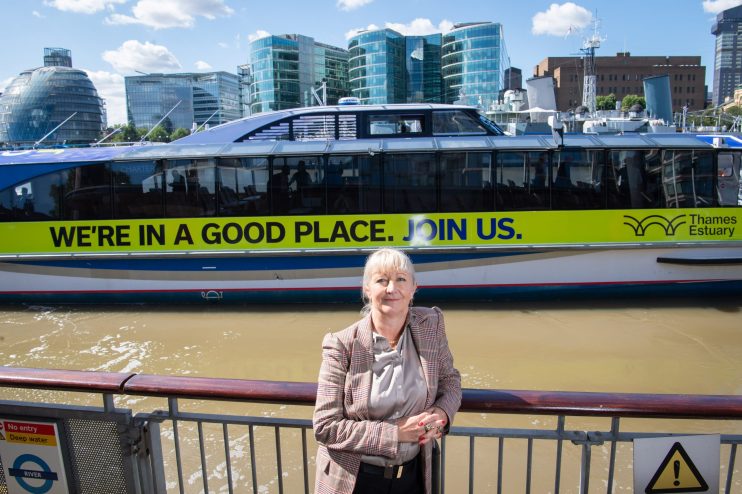New Thames Estuary development plan could add £115bn to UK economy

The Thames Estuary growth board has today launched a new development initiative that could add up to £115bn to the UK economy.
Named the “Green Blue”, the scheme comprises 30 individual projects in the south-east, with the potential to create 1.5m jobs.
These include infrastructure developments such as the Lower Thames Crossing, as well as plans for one of the UK’s 10 new freeports at Tilbury.
Central to the initiative are plans to increase the amount of freight and passengers moved on the river by 25 per cent and 50 per cent respectively over the next five years.
In order to do so, Thames Estuary envoy and growth board chair Kate Willard told City A.M. that the board would call for £1.3bn in funding from the government.
In addition to the freight and transport improvements, the money would also go towards the development of a hydrogen energy infrastructure to support the environmentally friendly development of the river.
Willard said she was confident that when the government saw the scale of the opportunity, it would jump at the chance to invest.
‘We’re going to the government with a great offering – we’re not going with a begging bowl. When the government understands the prize that it can win it will naturally invest”.
With ministers now looking to reset the UK economy after the ravages of the coronavirus crisis, as well as preparing for departure from the EU, Willard said the project was the ideal chance for the government to show their commitment to Boris Johnson’s levelling-up agenda.
The area covered under the project, which includes North Kent, South Essex and East London, has historically been one of the more deprived areas in the south of the UK.
Before the Open newsletter: Start your day with the City View podcast and key market data
She added that the project’s new board, which is split between public and private representatives, were united in their goal to make the Thames Estuary “the most productive in the world”.
“I can’t think of another board in the UK, which represents such a large area of land and so large and diverse a population that is as unified as ours is”, she told City A.M..
“This has never before been joined up in a strong enough way to capitalise on that opportunity. We have got politicians from the City of London to Margate to Southend and there isn’t a fag paper between them”.
An ‘unparalleled opportunity’ for the UK
Central to the initiative is the plan to develop a freeport at Tilbury in Essex to take advantage of one of the UK’s largest shipping routes.
“The Thames is the UK’s most significant international gateway to the world”, said Willard. “It’s very location means that I hope this is an unparalleled opportunity for the government”.
Freeports exist under special economic rules which mean businesses have different customs and tariff rules than normal ports.
Willard said she wanted the Tilbury port to expand over time to become an estuary wide-free port.
“What I want to be able to do is in six months or 12 months or 18 months time, to add another bit to that free port, so slowly over time, as the rest of the estuary gets ready to join in, we can build a fully estuary-wide port”.
Other projects to be included in the “Green Blue” scheme include the consolidation of London’s historic Smithfield, Billingsgate and New Spitalfields markets at a new site in Dagenham Docks.
And there are also plans to build a leisure park with two theme parks, a water park, and 3,500 hotel rooms at Swancombe in Kent, which will itself create 30,000 jobs.
Finally, a DCMS-backed plan to create a “production corridor” for the UK’s creative industries in the south-east could create 50,000 jobs and generate £3.7bn for the UK economy, becoming the UK’s largest concentration of creative production.
Local government minister Simon Clarke welcomed the project, saying: “The UK is open for business and the Thames Estuary Growth Board’s plan makes this clear.”